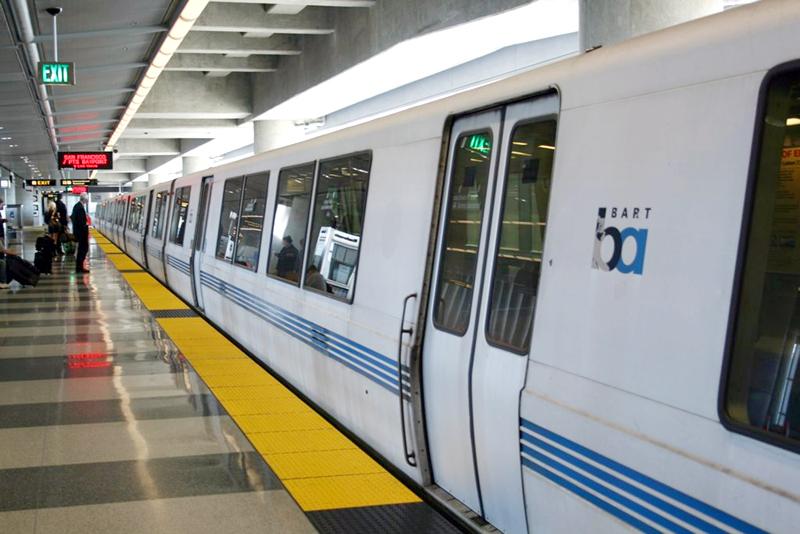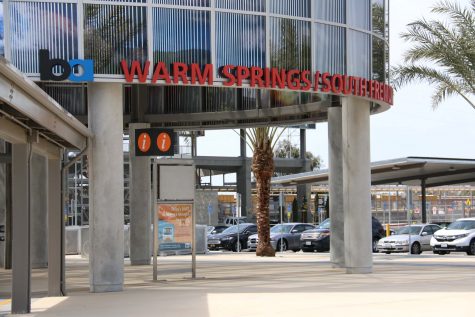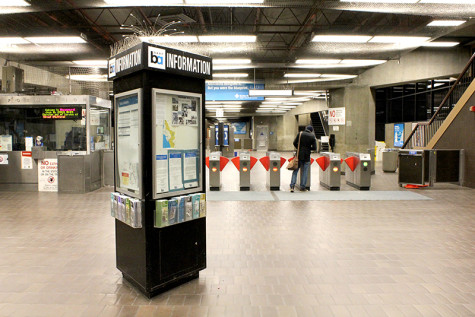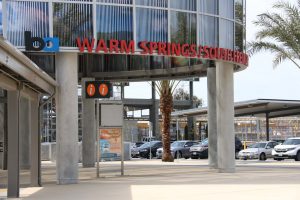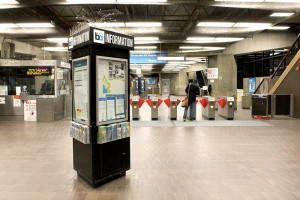BART: A day in the life of a rider
November 14, 2017
It’s about ten minutes before the 6 a.m. BART train arrives at the Richmond station. California State University, East Bay student Tiffany Delgado makes sure she arrives on time to ensure she gets a seat.
Twice a day, five times a week — this is what a commute to and from school looks like for Delgado, who is currently pursuing a degree in accounting. Rain or shine and even with often-delayed trains, she spends a great deal of her time seated or standing during a noisy and crowded train ride.
Now it’s 6 a.m., Delgado and I make it to her train just in time to stand in line with other passengers, who frantically guard the entrance to the train. Pushing and shoving begins as passengers on the BART get off and the ones waiting on the platform rush inside, many of whom are carrying overstuffed backpacks or massive suitcases. These passengers range in all ages, from 30-year-old businessmen to teenagers accompanied by their friends.
The first thing that hits me as I set foot inside the BART train is the strong stench of urine that only seems to get stronger as you make your way further inside the car. The floor is covered with shoe prints and pieces of tissue paper, along with a couple pages from a newspaper that look to be the San Francisco Chronicle.
While a lot of the passengers have found a seat by this point, there are a couple of people holding onto the overhead straps or gripping metal bars for when the train unexpectedly jerks or makes a stop. Some of these people standing even attempted to read newspapers and eat food or drink beverages, but not having a seat makes these rather simple tasks much more difficult. Each time the train jerks, the crowd lets out an involuntary groan indicating their frustration.
Looking further into the train, several of the homeless riders are seated on the floor
while one or two of them occupy seats. For a while, they are quietly seated but then a homeless man got up and started asking passengers for money. Many commuters turned away from him, but a few took out their wallets or searched through their handbags and handed him a couple bills or spare change. Delgado explained that she always keeps some loose change to give away since being around homeless people is a regular thing for her. Since of none of them are disrespectful or harass passengers, she feels empathetic towards them and tries to give them whatever she can, whenever she can.
The train continued to run rather smooth with the exception of a couple bumps on the rail and after about an hour, we finally arrived at the Hayward BART station. Everyone headed towards the door in a disorderly frenzy, which required a lot of pushing and shoving similar to the boarding process. A few people trip over items and others stomped their feet while they checked their wristwatches every few seconds. Finally, after a few minutes of letting the antsy ones pushed ahead, Delgado and I made it out of the train, onto the platform and made our way towards the CSUEB shuttle.
As we made our way to the shuttle stop, we found a long line of at least twenty students ahead of us. While this seemed like a lot to me, Delgado explained it is much better than other days when the line stretches out all the way to another bus stop.
Once the shuttle arrived at the station Delgado and I were able to make it on, but there were several students who are not as lucky and were left behind waiting for the next shuttle. Although the ride to school is a relatively easy, about 15 to 20 minutes, by the time I arrived on campus I felt like it had been hours and I was exhausted. My first thought was I couldn’t wait to get home, but my day had not even started yet.
Delgado stays on campus until around 5 p.m., when she boards the shuttle back to the Hayward BART station and then catches the train home to Richmond. This routine takes her approximately two hours each time.
A commute to school in the morning was enough to exhaust me and imagining going through it all over again after a handful of classes, five days a week made me appreciate living close to campus and having a car to take me to and from school. I could not imagine relying on BART for my commutes on a daily basis.




